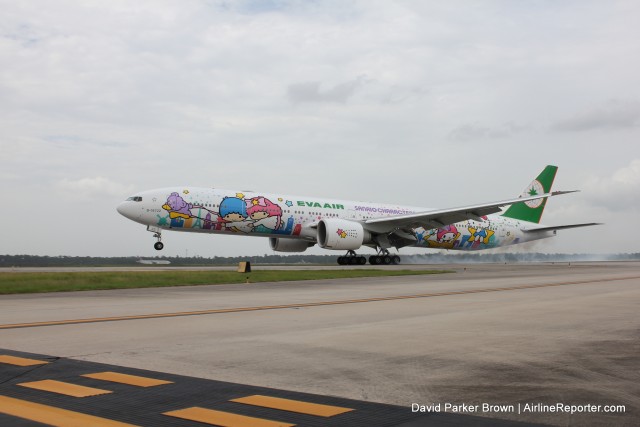
Houston sees its first Hello Kitty EVA Air Boeing 777-300ER (reg: B-16722)
It is hard to be a part of modern society without at least having a basic idea that Hello Kitty exists. I really had my first true run-in with the girl (she is not a cat, apparently), when covering the new international terminal opening up at Haneda Airport in Tokyo. They have a Hello Kitty store there, and while I have seen some backpacks and other knick-knacks with her image previously, I had no idea of the scale, nor the culture that surrounds this global brand. I was a bit impressed.
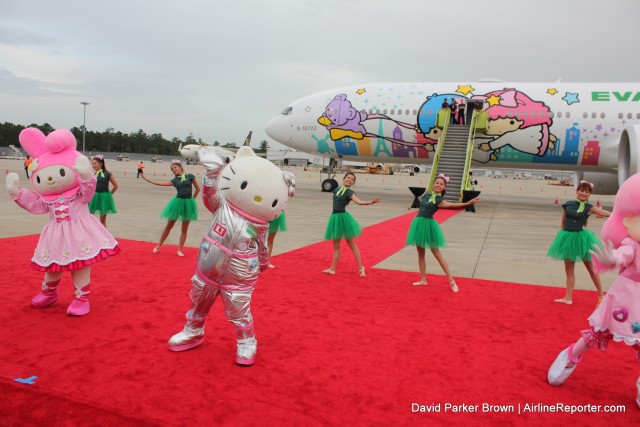
Dancing with Hello Kitty — where else? In Texas!
When I was recently invited to cover EVA Air’s inaugural flight from Taipei (TPE) to Houston (IAH), with a Hello Kitty celebration, I still was skeptical of the power of the cat-looking icon from a country that is not even the airline’s own.
However, after not only experiencing the event, but also a 15-hour-40-minute flight on the Hello Kitty-themed plane, I have to say that I am starting to respect it, but maybe not for the reasons you might imagine.
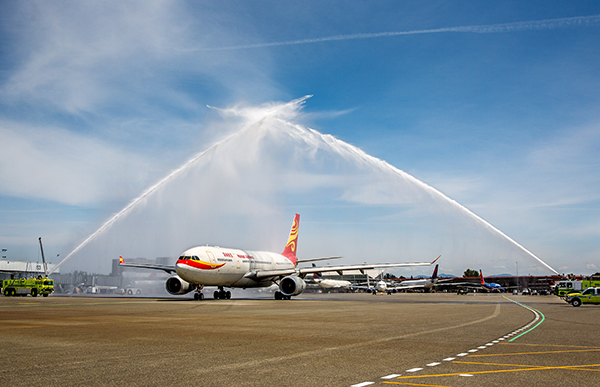
Hainan Airlines inaugural of new non-stop service to Shanghai, Gate S1. – Photo: Don Wilson | Port of Seattle
What’s better than one inaugural flight? Two, of course. Recently, Hainan Airlines started service from Shanghai (PVG) to Seattle (SEA) using an Airbus A330-200, and also Beijing to San Jose (SJC) using a Boeing 787-8. We had writers at both events to cover the occasion. It might be the same airline, but each of the inaugurals were unique.
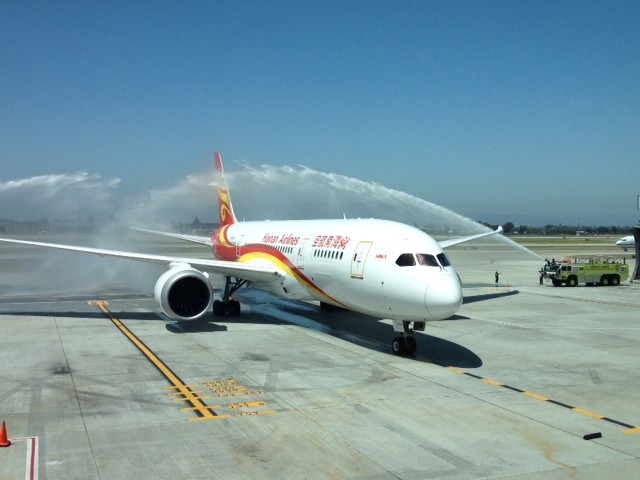
Welcoming water cannon salute for the 787 – Photo: Michael Restivo | AirlineReporter
We are going to give you the run down of both inaugurals in one story, leading with Lauren, who was in Seattle, and then Michael, who was in San Jose. Both tell it from their own personal perspective — what was it like for them to attend their first inaugural flight media event?
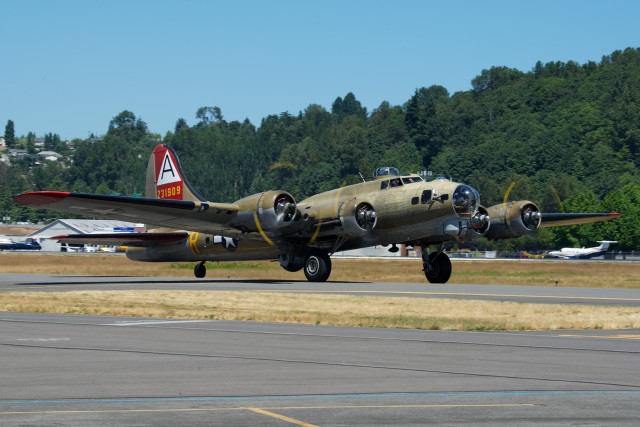
NL93012, the Collings Foundation B-17G dubbed “nine-o-nine” taxiing at Boeing Field – Photo: Bernie Leighton | AirlineReporter
This weekend only (June 26th-28th) if you want to see some warbirds, head down to the Museum of Flight at Boeing Field, put down a few bucks, and enjoy!
What, exactly, does the Collings Foundation offer? A little bit of what you see above, and then more of what you see below…
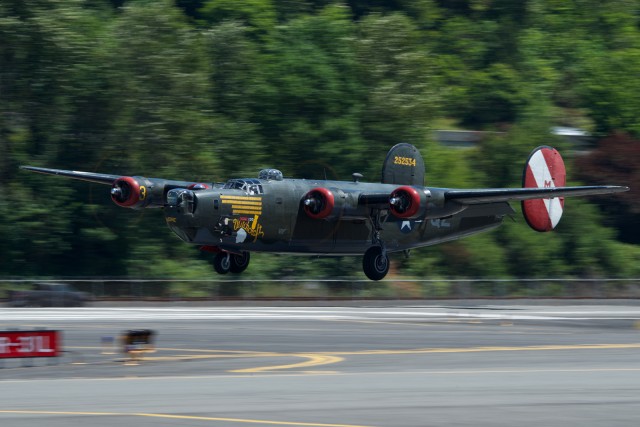
NX224J, known as Witchcraft, is the only flying B-24J out there – Photo: Bernie Leighton | AirlineReporter
Their most famous aircraft is the only remaining Boeing B-24J “Witchcraft.” You can fly in it for $450; that’s cheaper than a B-29 Superfortress! They also have the only fully dual-control TP-51C Mustang (dubbed “Betty Jane” in their employ). Though the rates to fly on that are a bit more expensive, and best acquired by contacting the Foundation directly.
On top of that, they are bringing their Boeing B-17G “Nine-O-Nine”, and a B-25 “Tondelayo.” You can fly on the B-25 for the reasonable price of $400. If you don’t feel like flying, you can still make a small donation to have a look around any of their visiting aircraft.
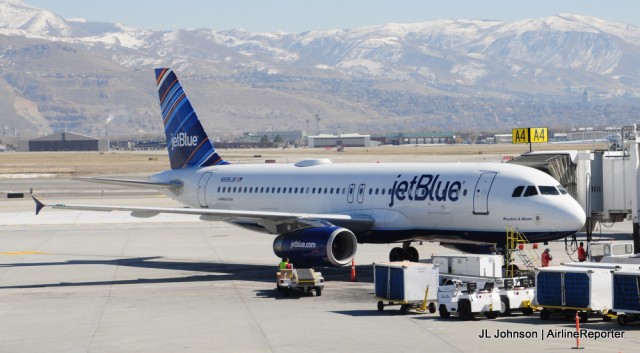
N595JB, an Airbus A320 named Rhythm & Blues at SLC airport
In part one of this series I provided an overview of my airline sampler trip (five airlines over four days) and offered my thoughts on my very first flight with Virgin America, from Dallas (DAL) to San Francisco (SFO.) For part two I reviewed United’s 787-8 BusinessFirst service from SFO to Los Angeles (LAX). Today we pick up just a stone’s throw away from LAX, at Long Beach Airport (LGB), for a quick journey to Salt Lake City (SLC) with JetBlue.
Let me first say, I’ve always been fond of JetBlue. Except their route map. They simply don’t exist in my neck of the woods, so the opportunity to check them out never presented itself. When opportunity doesn’t knock, we’ve got to go looking. Enter the Airline Sampler, a trip focused solely on getting out and experiencing new things. I was excited to find a way to incorporate my first B6 (their airline code) flight into my adventure.
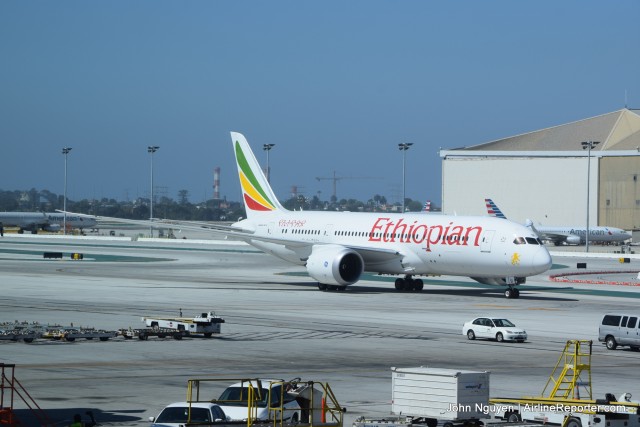
Ethiopian’s 787 taxis at LAX to gate 134
With the arrival of flight ET504 into the new Tom Bradley International Terminal on June 20th, Ethiopian Airlines officially kicked off its service between Addis Ababa and Los Angeles, via Dublin.
The festivities, punctuated with live music as well as traditional Irish and Ethiopian dancing, celebrated the first time a carrier based in Africa has served Los Angeles.
These service additions are part of Ethiopian’s overall strategy to dominate the African market. By maximizing fleet utilization and picking up a route that Aer Lingus abandoned in 2008, Ethiopian Airlines has smartly connected the large Ethiopian and Irish communities in Southern California to their respective native homelands, proverbially killing two birds with one stone.







